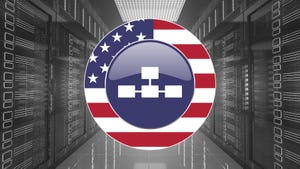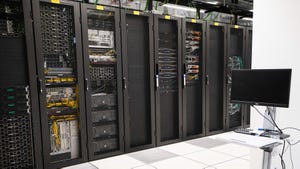
Insight and analysis on the data center space from industry thought leaders.
2025 Cloud Predictions: Legacy Cracks, AI Growth, and an Edge Boom2025 Cloud Predictions: Legacy Cracks, AI Growth, and an Edge Boom
Adaptability is the key to thriving in this new era, and 2025 is the year to take control of your cloud strategy, writes Akamai’s Ari Weil.

As we approach 2025, forces that have simmered for years in the cloud industry – mounting frustrations with traditional providers, the rapid expansion of AI, and a push to the edge – are forcing enterprises to reexamine their cloud strategies.
This year will bring transformative changes as companies prioritize technologies that empower them to extend the benefits of the cloud to the edge.
1. Legacy Cloud Providers Face Growing Scrutiny
For years, traditional cloud giants have dominated the market. While they’ll remain industry juggernauts for the foreseeable future, they are beginning to show signs of wear. The centralized model they were built on struggles to align with the shifting needs of modern businesses.
This shift isn’t just about escaping ongoing challenges of high costs and lock-in; it’s also about placing data and applications closer to users, improving performance, and innovating faster. Companies are looking to reduce dependency on single providers, aiming instead to build systems that reflect their unique goals and can adapt to changing demands. Expect this move away from monolithic cloud providers to accelerate in 2025, as regulators continue to encourage transparency and competition, making it easier for businesses to explore new options without sacrificing control or efficiency.
2. AI Drives a Shift to a More Distributed Cloud
AI will continue to reshape enterprise technology in 2025, pushing legacy cloud models to their limits. Sophisticated AI applications, such as healthcare, manufacturing, and autonomous systems, demand low-latency processing that centralized data centers cannot deliver. Distributed cloud computing is stepping in as the solution, enabling data to be processed closer to the action and minimizing delays.
This shift is pivotal for AI’s growth. Investments in distributed architectures ensure that AI models operate efficiently and instantly, powering real-time applications across industries and giving companies a significant edge by supporting data-intensive, time-critical operations.
3. Demand Increases Across Every Aspect of Compute
In 2025, the changing face of the cloud will make it essential for companies to manage, deploy, and secure applications across a seamless continuum of compute environments – from hyperscale data centers to the edge. This evolution won’t just change where data is processed; it will demand a cohesive strategy that enables fluid operation across all environments, without sacrificing performance, security, or control.
As organizations expand their infrastructure to bring applications closer to end users, the need for consistent, centralized management across diverse sites will become critical. In industries like healthcare, finance, and autonomous systems, where even slight delays can impact outcomes, businesses will need an integrated approach that spans the entire compute spectrum.
By 2025, companies with the capability to manage this full range of infrastructure – from core to edge – will gain a distinct advantage, positioning themselves to deliver responsive, secure services in real time. This shift will make unified compute management across data centers, colocation sites, and edge environments a fundamental requirement for staying competitive in a distributed, data-driven world.
4. Multicloud’s Rising Role in an Open Cloud Landscape
The expanding need for distributed computing in 2025 will push the cloud industry toward a more open, flexible approach. As businesses embrace new architectures, they’ll move away from the rigid, single-cloud structures of the past. Instead of traditional “lift and shift” strategies, companies will adopt a more modular approach, selecting the best cloud environments for their unique workloads – be it public, private, or edge – fostering a multicloud environment by design.
This shift makes multicloud an unarguable necessity, driven not by redundancy alone but by the strategic deployment of workloads in the environments best suited to support them. With cloud native technologies like Kubernetes, companies can now manage these varied ecosystems more seamlessly, running applications in the locations that maximize performance, compliance, and responsiveness.
In 2025, organizations investing in open, multicloud architectures will gain the adaptability to meet customer demands at every level, whether in data centers or edge locations. This new era of cloud, built around choice, control, and flexibility, will be essential for enterprises seeking to operate at the speed and scale modern business requires.
A Transformative Year for Cloud
The shifts we’re seeing in 2025 – diminishing reliance on legacy providers, edge-powered AI, and a continued blend of requirements across a wider continuum of compute – signal an ecosystem adapting to real-world demands for a more adaptable, distributed, and responsive cloud. Companies that embrace these changes will unlock the flexibility and operational freedom to innovate, while those slow to adapt risk being left behind.
Adaptability is the key to thriving in this new era, and 2025 is the year to take control of cloud strategy – moving from rigid, centralized systems to a dynamic, flexible approach that keeps pace with the demands of modern business. The future of cloud computing is distributed, versatile, and built for the realities of today’s digital world.
About the Authors
You May Also Like











